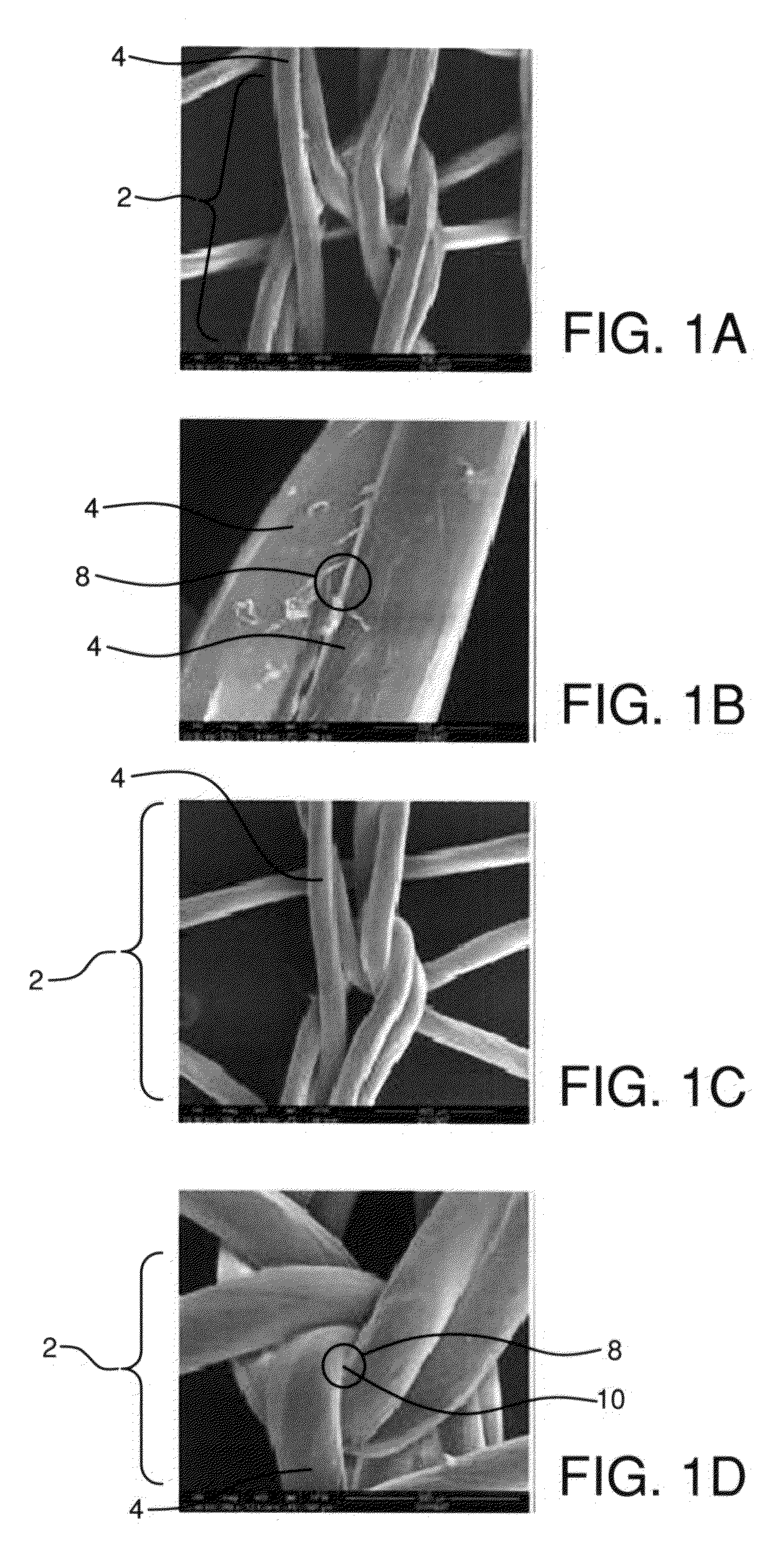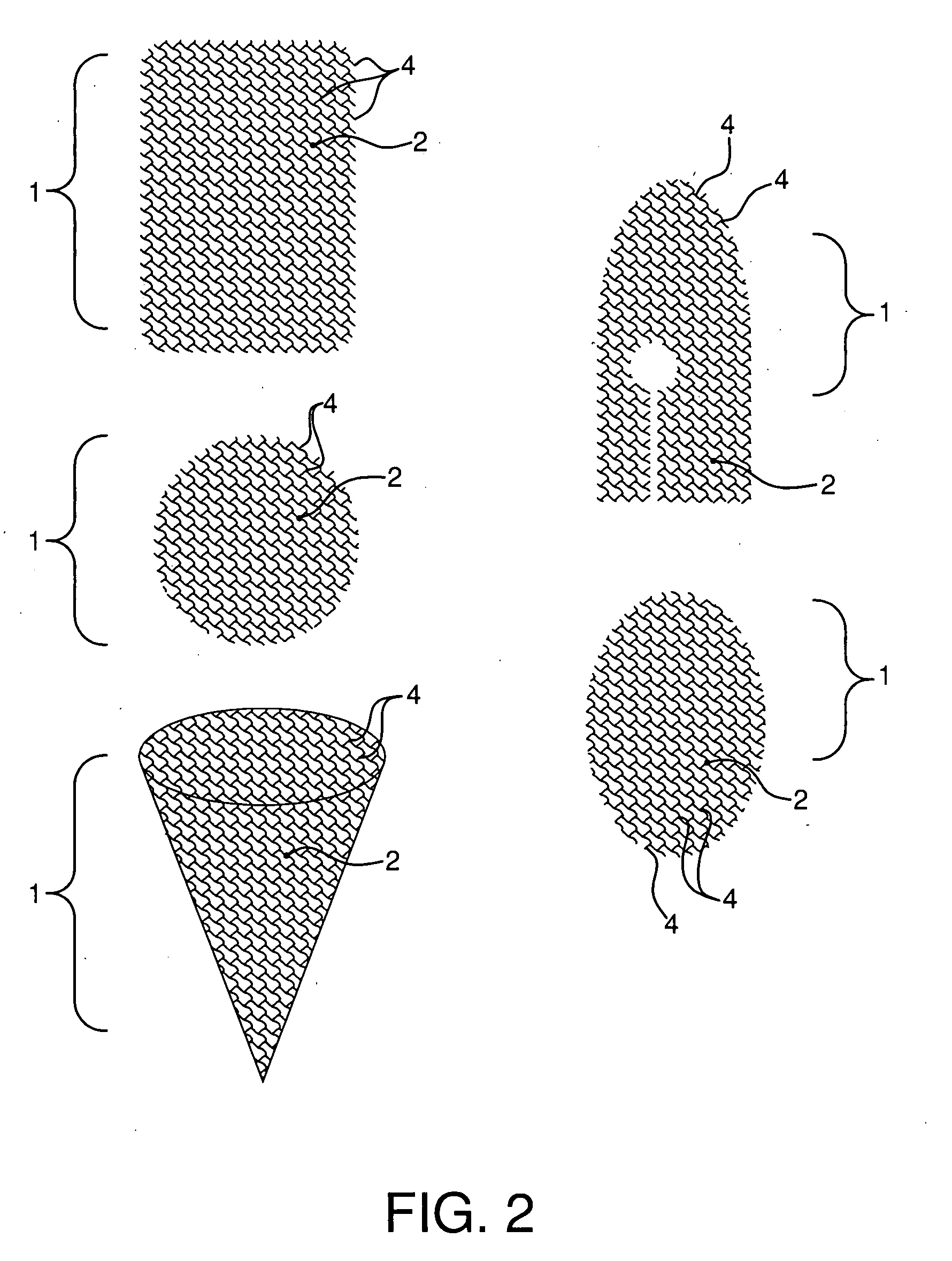Knit PTFE Articles and Mesh
a technology of ptfe and articles, applied in the field of knitting ptfe articles and mesh, can solve the problems of reduced postoperative compliance, patient discomfort, lack of appropriate monofilament,
- Summary
- Abstract
- Description
- Claims
- Application Information
AI Technical Summary
Problems solved by technology
Method used
Image
Examples
example 1
[0029]Table 2 illustrates a typical example of knitted mesh as utilized by this invention. These examples are illustrative only and are not intended to limit the scope of the present invention. Various knit patterns may be used to form the PTFE knits used in the present invention.
TABLE 2Knit Pattern ExamplesABCDEFFilamentMonoMonoMonoMonoMonoMonoKnit TypeDualDualDualDualDualDualBarBarBarBarBarBarWPI [wales per191919181619inch]CPI [Courses243816212329per Inch]PTFE Fiber195195195195195195[denier]Mesh Weight63.489.5123.3135.5163.8164.4[g / m2]Pore Size260017008257002100425(approx.) [μm]
example 2
Stiffness Measurement
[0030]The overall hand, or average textile stiffness, was measured for each of the knit examples in Table 1 according to INDA Standard Test IST 90.3 (95) Handle-O-Meter Stiffness of Nonwoven Fabrics. A summary table of original stiffness can be found below in Table 3. As seen by Table 2 and Table 3, various knit patterns and fiber deniers may result in differing stiffness measurements.
example 3
Stiffening Treatment
[0031]The untreated PTFE knits exemplified in Table 2 were treated to increase stiffness by attaching the textile to a pin hoop such that when exposed to heat the material will be fully constrained, thus preventing the article from contracting. The pin hoop is constructed of stainless steel, has a diameter of approximately 24 inches, and has 0.020 inch pin needles approximately 1 inch in length that are spaced evenly every 1-2 inches around the perimeter. The pin hoop, with textile firmly affixed, was then heated to 365° C. for 7 minutes. This treatment results in self-bonding at the fiber cross-over points.
PUM
| Property | Measurement | Unit |
|---|---|---|
| Temperature | aaaaa | aaaaa |
| Fraction | aaaaa | aaaaa |
| Fraction | aaaaa | aaaaa |
Abstract
Description
Claims
Application Information
 Login to View More
Login to View More - R&D
- Intellectual Property
- Life Sciences
- Materials
- Tech Scout
- Unparalleled Data Quality
- Higher Quality Content
- 60% Fewer Hallucinations
Browse by: Latest US Patents, China's latest patents, Technical Efficacy Thesaurus, Application Domain, Technology Topic, Popular Technical Reports.
© 2025 PatSnap. All rights reserved.Legal|Privacy policy|Modern Slavery Act Transparency Statement|Sitemap|About US| Contact US: help@patsnap.com



